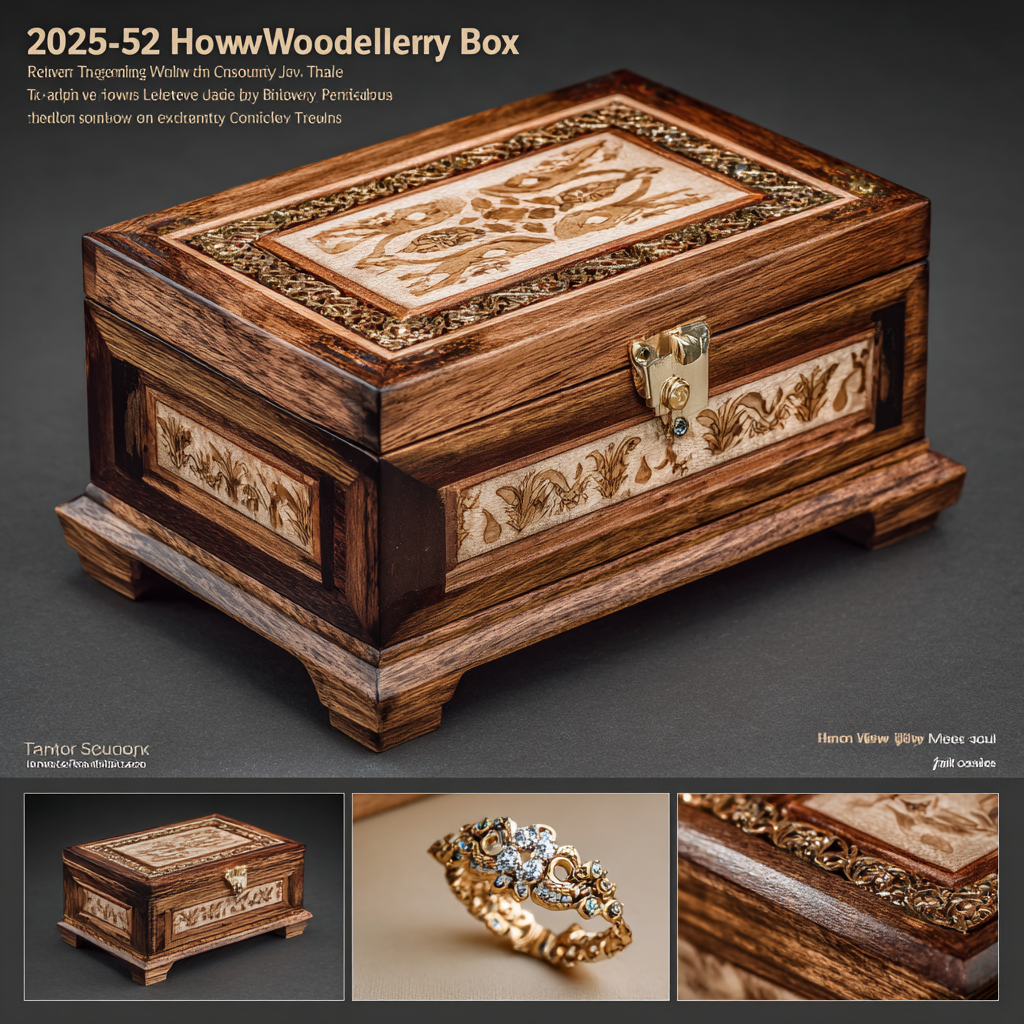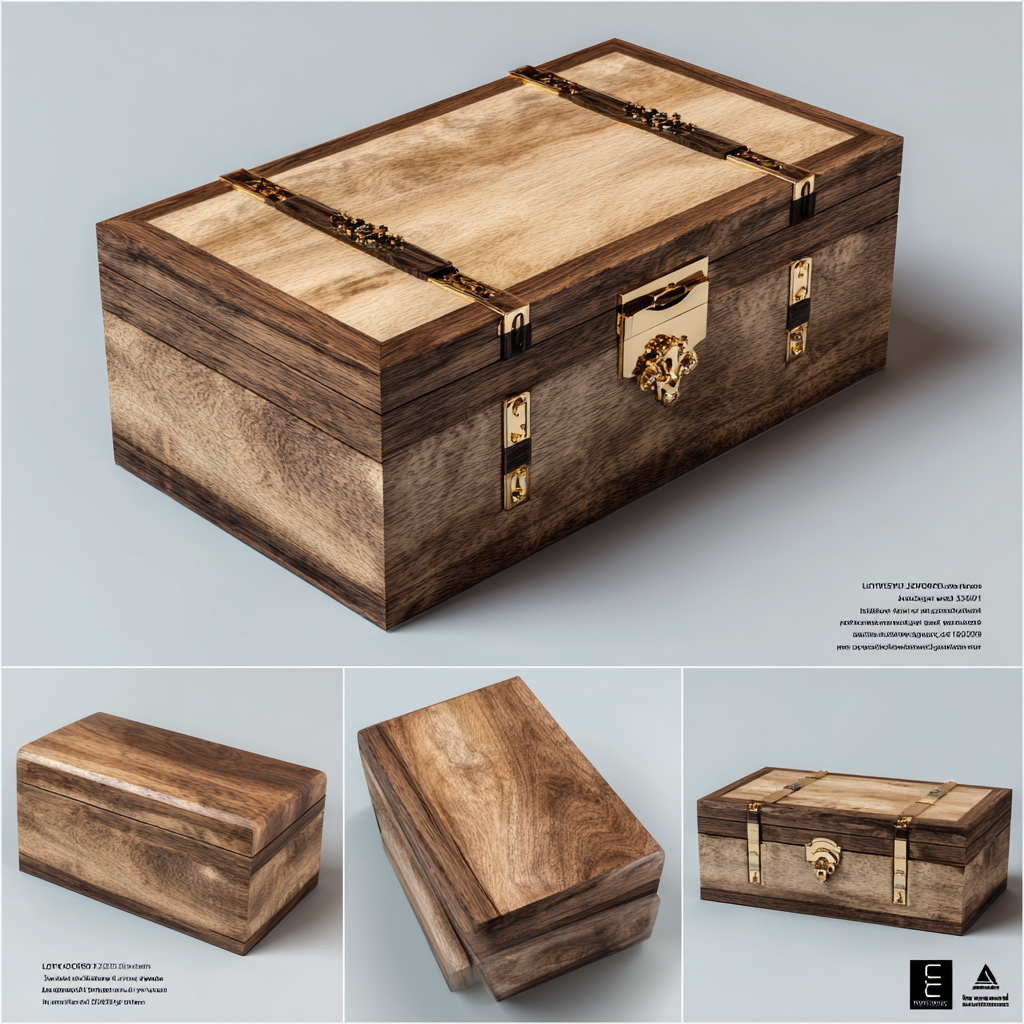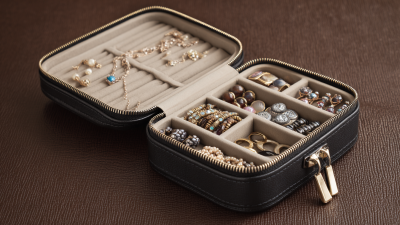In the realm of woodworking, the creation of a Woodwork Jewelry Box stands as a delightful project for both beginners and seasoned artisans alike. This guide aims to equip aspiring woodworkers with essential tips and techniques to craft a stunning jewelry box that not only serves a functional purpose but also embodies personal style and creativity. With an array of design possibilities—from intricate carvings to sleek, modern aesthetics—the Woodwork Jewelry Box becomes a canvas for self-expression and craftsmanship.
As we delve into the world of woodworking, we will explore various methods that make the process enjoyable and rewarding. From selecting the right materials to mastering fundamental woodworking techniques, this guide will illuminate the path to creating a piece that is as beautiful as it is practical. Each step in crafting the Woodwork Jewelry Box is an opportunity to develop skills, learn about tools, and discover the joy of transforming raw wood into a treasured item. Whether you're making a gift for a loved one or crafting a personal keepsake, this project promises to enhance your woodworking journey in 2025 and beyond.

When embarking on your journey to create a stunning woodwork jewelry box, having the right tools is crucial for beginners. Essential tools you will need include a saw, chisels, a drill, and sandpaper. A hand saw or a circular saw will allow you to make precise cuts for your project, while a set of chisels will help you refine joints and add decorative elements. A cordless drill can be invaluable for making holes for hinges and locks, while sandpaper in various grits will ensure a smooth finish on your wood pieces.
Tip: When selecting wood for your jewelry box, opt for hardwoods like oak or walnut. These materials not only add durability but also enhance the aesthetic appeal of your finished piece. Remember to measure twice and cut once to prevent any errors, and always wear protective gear, like goggles and a dust mask, when working with power tools.
Another vital tool to consider is wood glue. It's not just for securing pieces together; it can also be used to create intricate designs with smaller cutouts. Working with clamps while the glue dries will ensure that your box maintains its shape and that joints are tight. This attention to detail will pay off in the craftsmanship of your jewelry box, making it a treasured item for years to come.
When crafting a stunning woodwork jewelry box, selecting the right type of wood is crucial, especially for beginners. Various wood types offer differing aesthetics, durability, and ease of work. Hardwoods such as oak, maple, and walnut are often recommended for their strength and versatility. According to industry reports, walnut, with its rich color and attractive grain pattern, is becoming increasingly popular for luxury items, while oak is celebrated for its durability and resistance to wear. Understanding these characteristics helps in making informed choices that align with the desired design and functionality of your jewelry box.
In addition to the traditional wood types, there is a growing trend toward engineered woods, like plywood and MDF, for beginner projects. These materials not only provide affordability and ease of manipulation but also reduce waste, making them a sustainable choice. A recent survey indicated that 60% of new woodworkers are leaning towards engineered options due to their stability and uniformity, which simplifies the crafting process. As you embark on your woodworking journey, consider how these wood types will impact not just the aesthetics but the longevity and usability of your handcrafted jewelry box.
Creating a stunning woodwork jewelry box begins with accurate measurements and thoughtful design. According to the Woodworking Industry Association, precision in measurements is crucial, as even a minor error can result in ill-fitting joints or uneven surfaces. For beginners, investing in quality measuring tools such as calipers, a square, and a reliable tape measure is essential. It's recommended to double-check all dimensions before cutting any materials. A study published by the Journal of Wood Science emphasizes that consistent precision not only ensures aesthetic appeal but also enhances the durability of the finished product.

When it comes to designing your jewelry box, it's important to consider the overall dimensions carefully. The average jewelry box measures around 10 to 12 inches in width and 6 to 8 inches in depth, accommodating various types of jewelry while maintaining portability. The National Woodworking Association notes that incorporating modular designs, such as adjustable compartments, can optimize space usage and cater to different jewelry types. By sketching your design with accurate dimensions before beginning the construction process, you can save time and materials, allowing for a more enjoyable woodworking experience.
Finishing techniques are crucial for enhancing the aesthetic appeal and durability of your wooden jewelry box. According to a report from the Woodworking Industry Association, properly finished wood not only improves its visual characteristics but can also increase its lifespan by up to 50%. Techniques such as sanding, staining, and sealing are fundamental in achieving a professional look while protecting the wood from environmental factors.
Sanding is the first step in the finishing process, which prepares the surface by eliminating rough spots and imperfections. This is followed by staining, which allows woodworkers to highlight the natural grain of the wood. Data from Market Research Future indicates that stained finishes are preferred by 68% of consumers for their rich appearance. Finally, sealing the wood with a high-quality finish, such as polyurethane or varnish, provides a protective barrier against moisture and wear, making the jewelry box both beautiful and resilient. Implementing these techniques will not only enhance the visual appeal of your creation but ensure it stands the test of time.

When embarking on your woodworking journey, safety should be your foremost priority, especially for beginners involved in crafting intricate projects like a jewelry box. According to a 2021 report by the U.S. Consumer Product Safety Commission, woodworking accidents account for nearly 15,000 emergency room visits each year. This staggering statistic highlights the importance of adopting essential safety precautions. Always wear protective eyewear to shield your eyes from flying debris and a dust mask to filter out wood particles in the air. Additionally, ear protection is advisable when working with loud machinery, as prolonged exposure can result in hearing loss.
Understanding your tools and workspace is crucial. A study published by the National Institute for Occupational Safety and Health indicates that improper tool usage is a leading cause of woodworking injuries. Before starting your project, take the time to read the manuals and familiarize yourself with each tool’s purpose and operation. Setting up a clutter-free workspace ensures that you can maneuver safely without the risk of tripping or fumbles that could lead to accidents. Adhering to these safety tips not only protects you but also instills a sense of confidence as you explore your creativity in woodworking.
| Tip/Technique | Description | Safety Precaution |
|---|---|---|
| Choosing the Right Wood | Select hardwoods like oak or maple for durability. | Always wear a dust mask to avoid inhaling particles. |
| Measuring and Cutting | Accurate measurements ensure a proper fit for your box. | Use clamps to stabilize your workpiece while cutting. |
| Sanding Techniques | Sand in the direction of the grain to achieve a smooth finish. | Wear safety glasses to protect your eyes from dust. |
| Assembly Methods | Consider using wood glue and dowels for a strong hold. | Ensure your workspace is well-ventilated when using adhesives. |
| Finishing Touches | Apply a wood finish to protect and beautify the surface. | Test finishes in a small area first and use gloves. |






